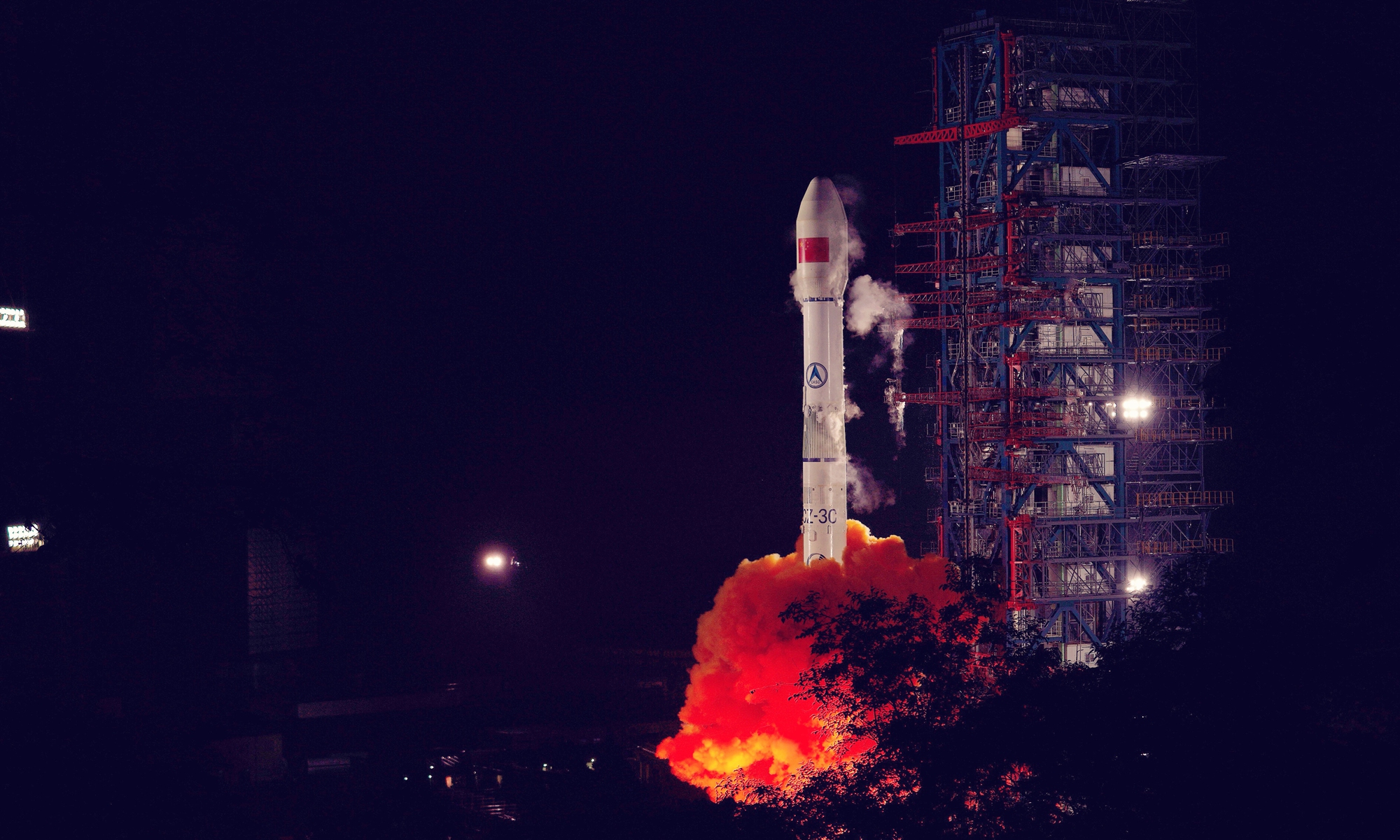
China launches the Tianlian-1 05 into a preset orbit via a Long March-3C carrier rocket. Photo: Guo Wenbin
China launched the Tianlian-1 05 into a preset orbit via a Long March-3C carrier rocket from the Xichang Satellite Launch Center in Southwest China's Sichuan Province late on Tuesday, completing the constellation of the country's first-generation data-tracking and relay communication satellites.
The rocket blasted off at 11:53 pm from the Xichang Satellite Launch Center and sent the Tianlian-1 05 satellite into a geostationary orbit, according to China Aerospace Science and Technology Corp (CAST), the giant state-owned aerospace contractor.
The new satellite will join forces with the Tianlian-1 01, 02, 03, 04 and Tianlian-2 01 satellites, operating together to provide communications coverage for Chinese spacecraft, and making China the second country to have a global relay satellite system after the US.
A space tracking system insider told the Global Times on Tuesday that the latest Tianlian-1 satellite will fly to a fixed service point by next Tuesday, before it moves to the testing stage.
Tianlian-1 05 was developed by the CAST, which is affiliated with the China Aerospace Science And Technology Corporation (CASC), and it will maintain the integrity of China's first-generation relay satellite system to ensure that the coverage and service capabilities of the system do not decline and will provide data relay, measurement and control information transmission and orbit determination services for spacecraft and other related platforms.
The CASC told the Global Times in a statement on Wednesday that the new satellite is the fifth of the Tianlian-1 family, the country's first-generation data-tracking and relay satellite network.
The development of the constellation started in 2003, and on April 25, 2008, China launched the first Tianlian-1 satellite, filling a gap in the field of data relay and space-borne spacecraft tracking and control, according to the CAST.
China launched the Tianlian-1 02 and 03 satellites on July 11, 2011 and July 25, 2012, respectively, and the three Tianlian-1 satellites formed a three-star global network.
The Tianlian-1 system increased the communication service coverage for China's manned spacecraft from less than 20 percent to more than 98 percent.
The Tianlian-1 04 satellite was launched on November 22, 2016, which further enhanced the system's stability and integrity.
The Tianlian constellation has provided coverage for every Chinese manned spaceflight since the Shenzhou 7 mission in 2008.
Global Times reporters have learned from China's space authorities that the Tianlian constellation has played a key role in the country's flagship space projects in recent years, such as its first interplanetary mission of the Tianwen-1 Mars probe, and the latest ground-space communications for taikonauts in the Tianhe space station core module.
"Since being put into use, the system has provided space-borne data-tracking and relay communications service for China's manned space projects, space station missions, spacecraft at low- and medium-altitude orbits as well as carrier rockets," the CASC told the Global Times in the statement.
It constitutes a space information transmission hub and lays the ground for the development of China's space-borne space-tracking system, space analysts said.
The Long March-3A rocket family, developed by the China Academy of Launch Vehicle Technology, has launched all the Tianlian satellites and sent them into their designated orbits.




